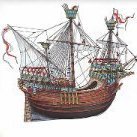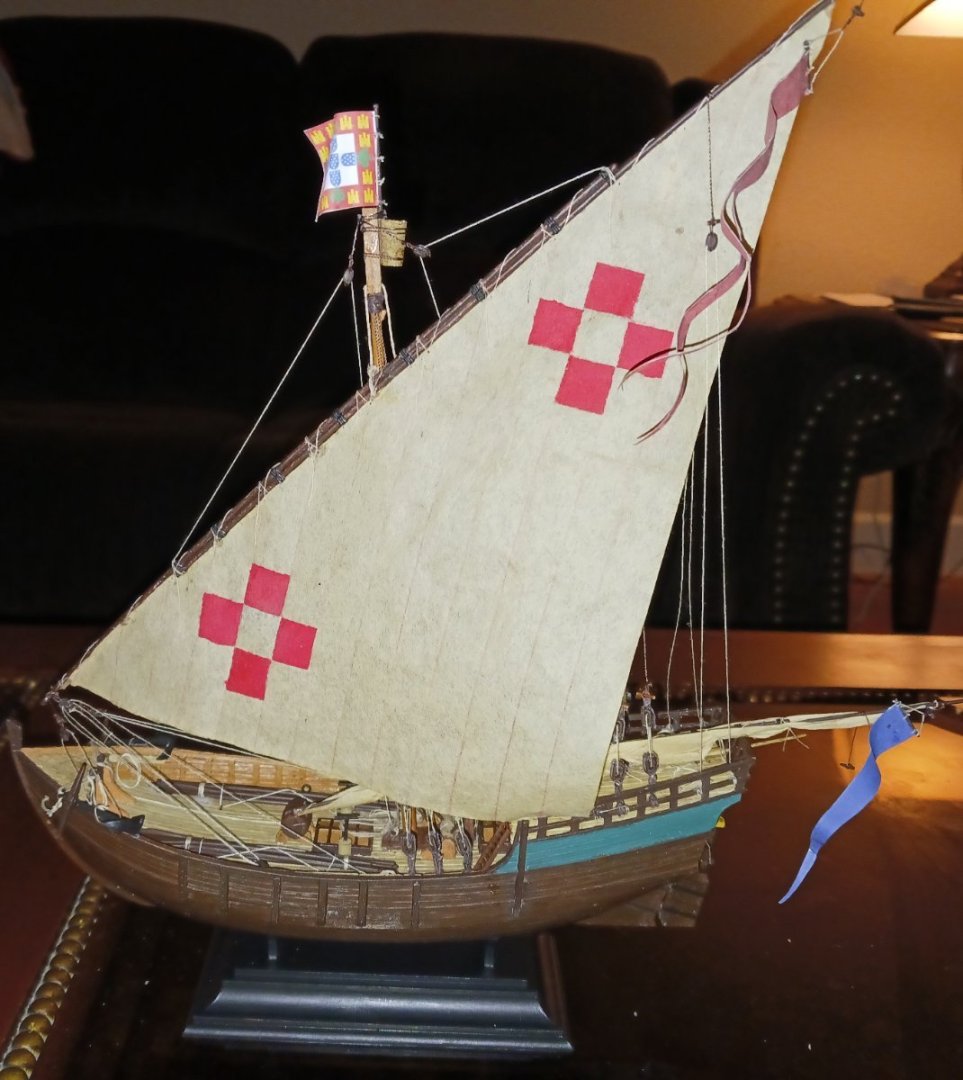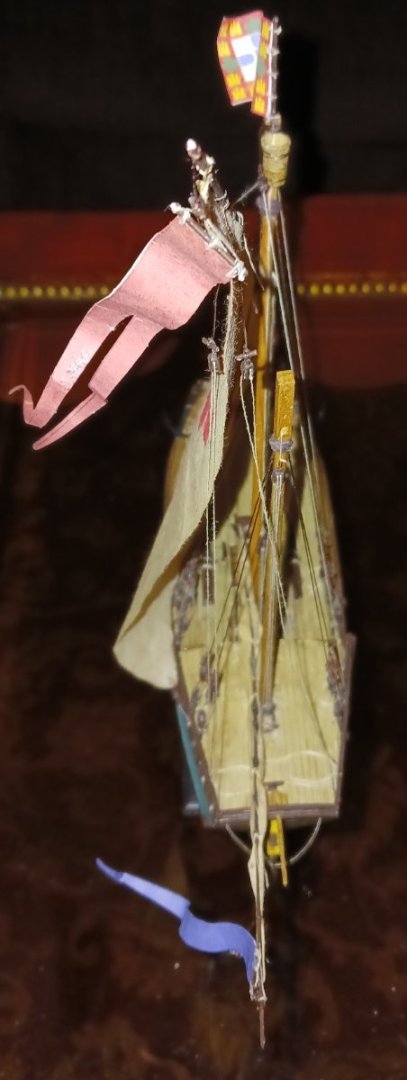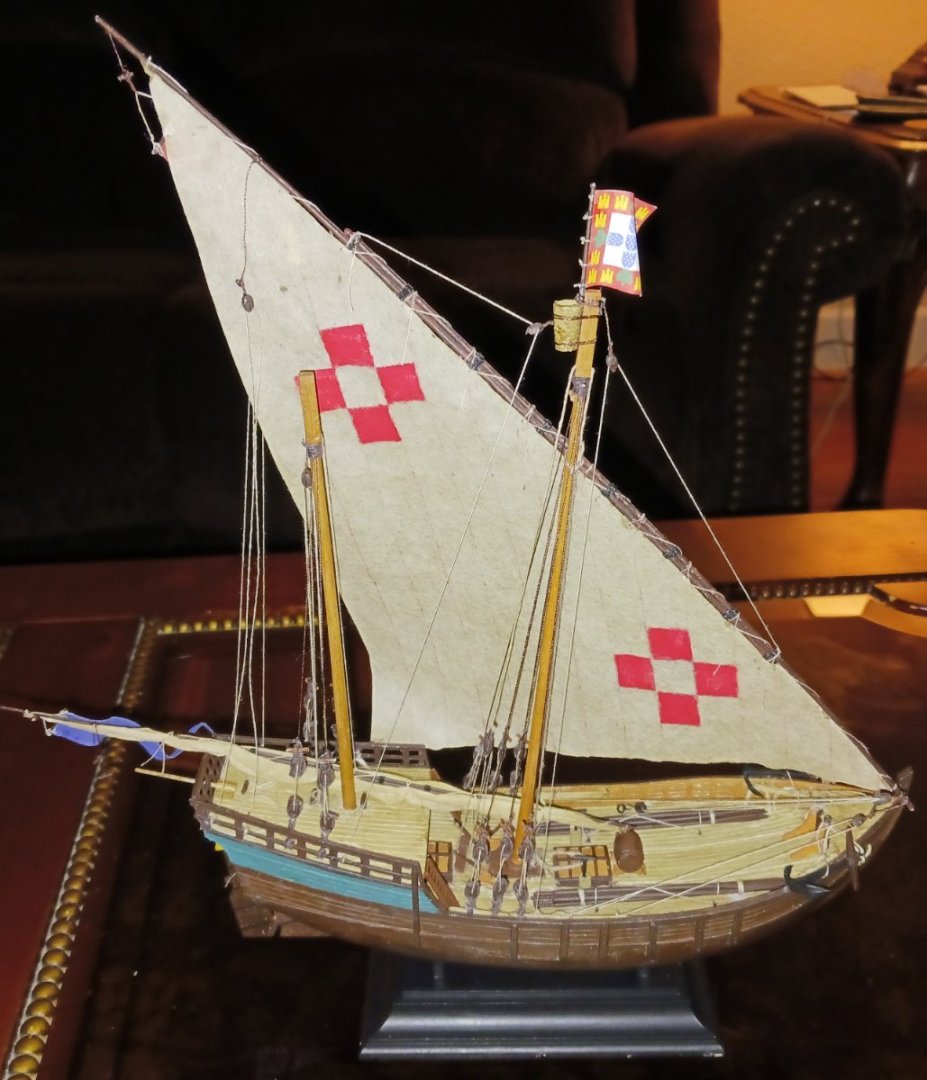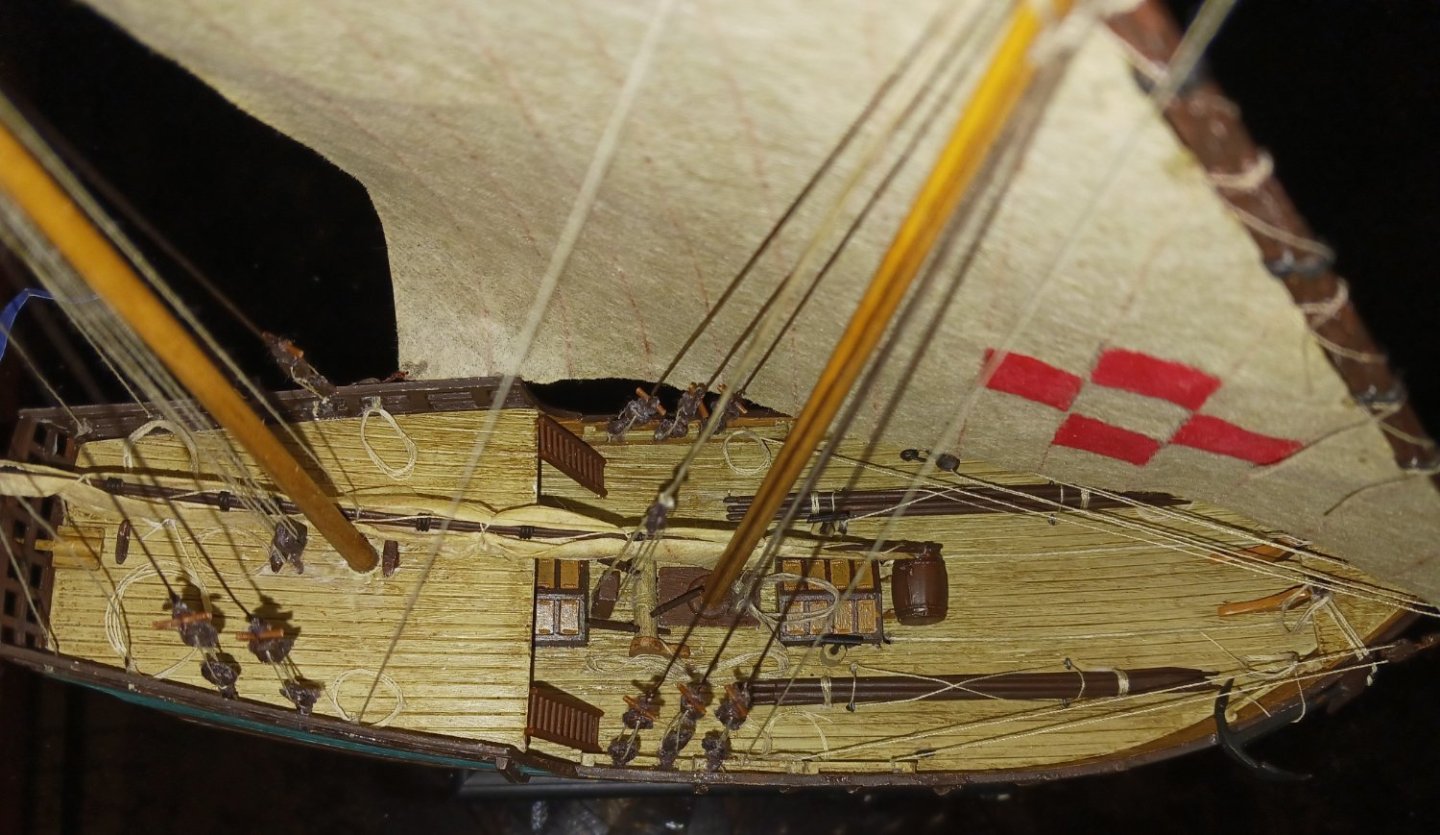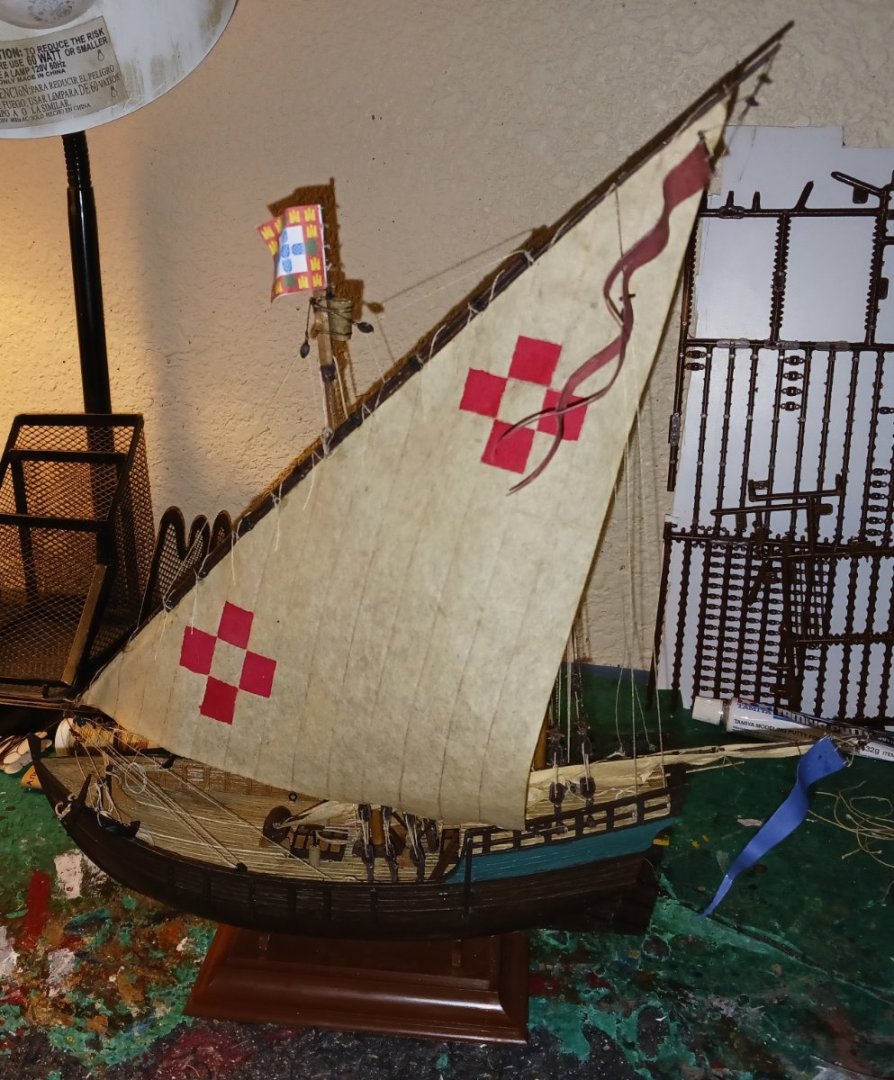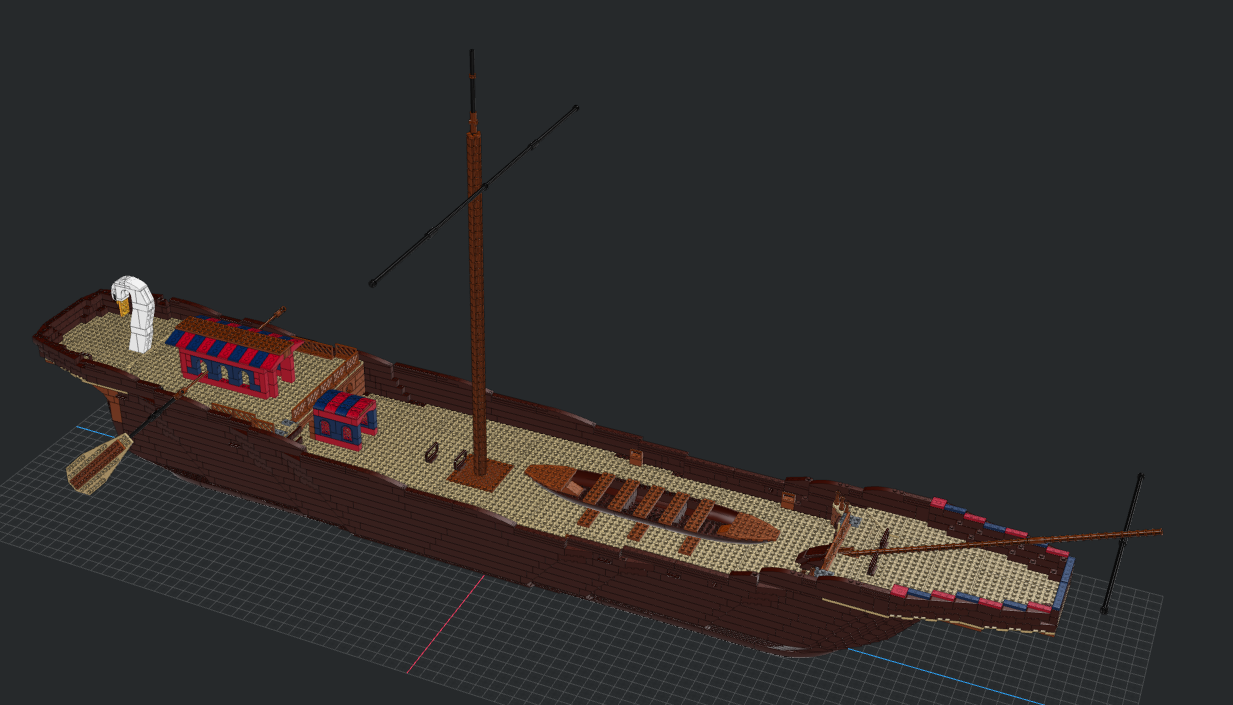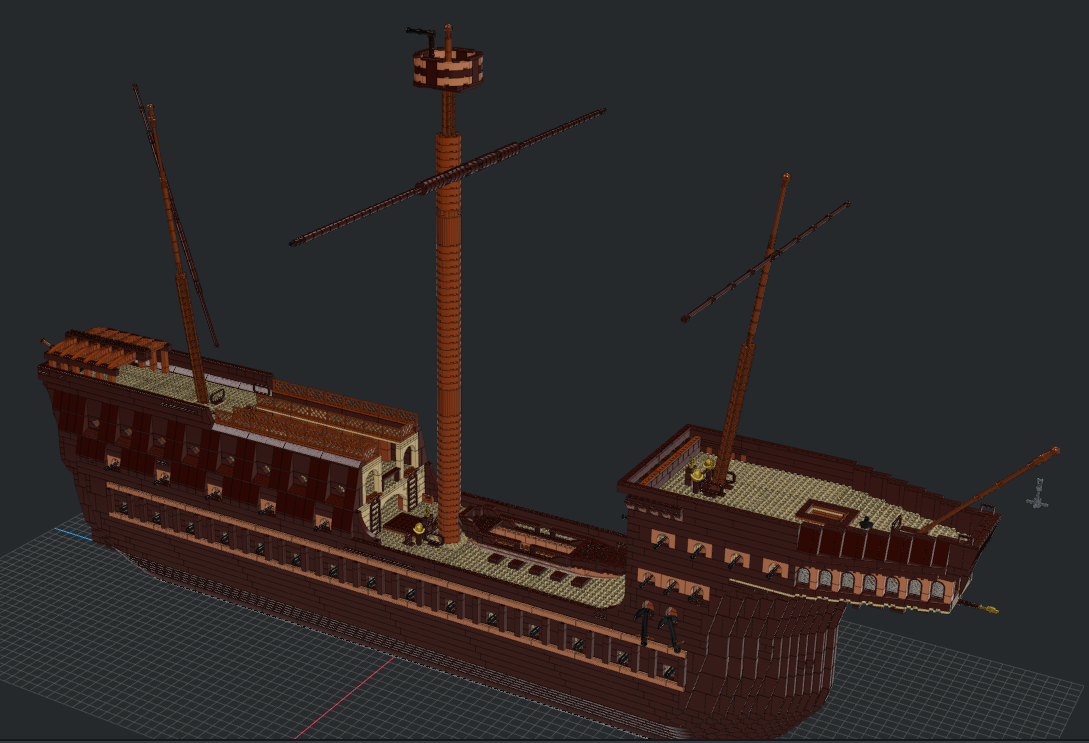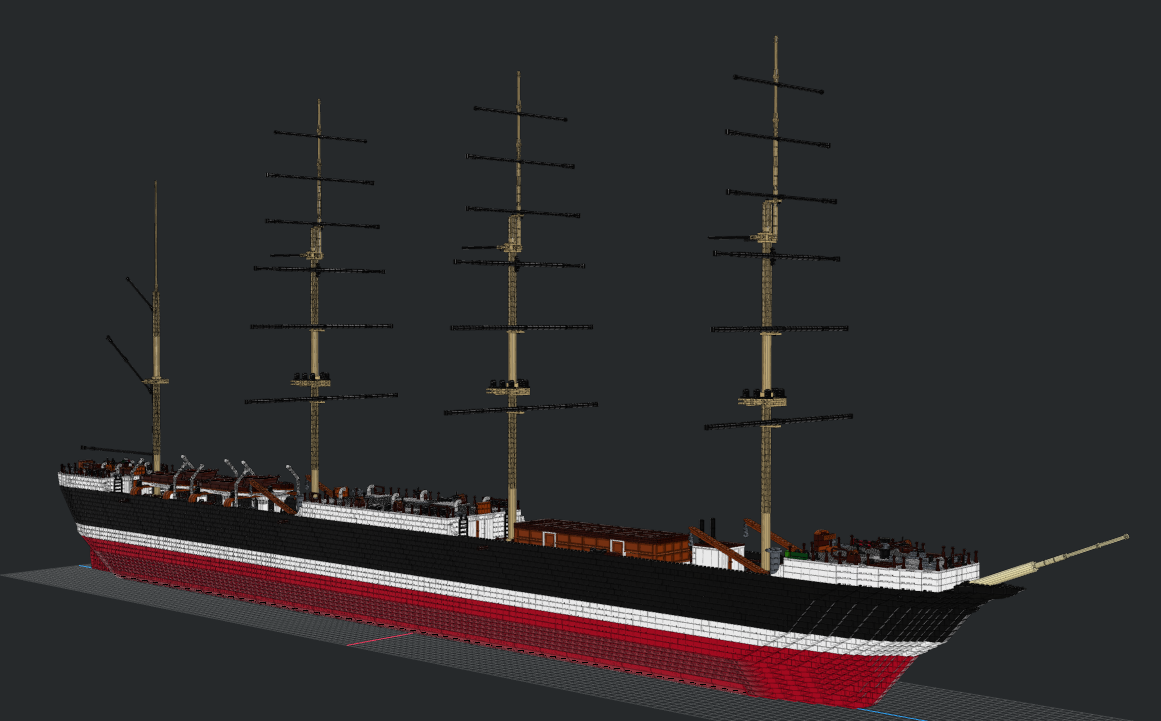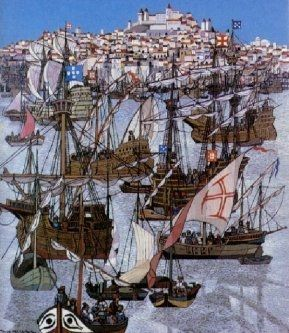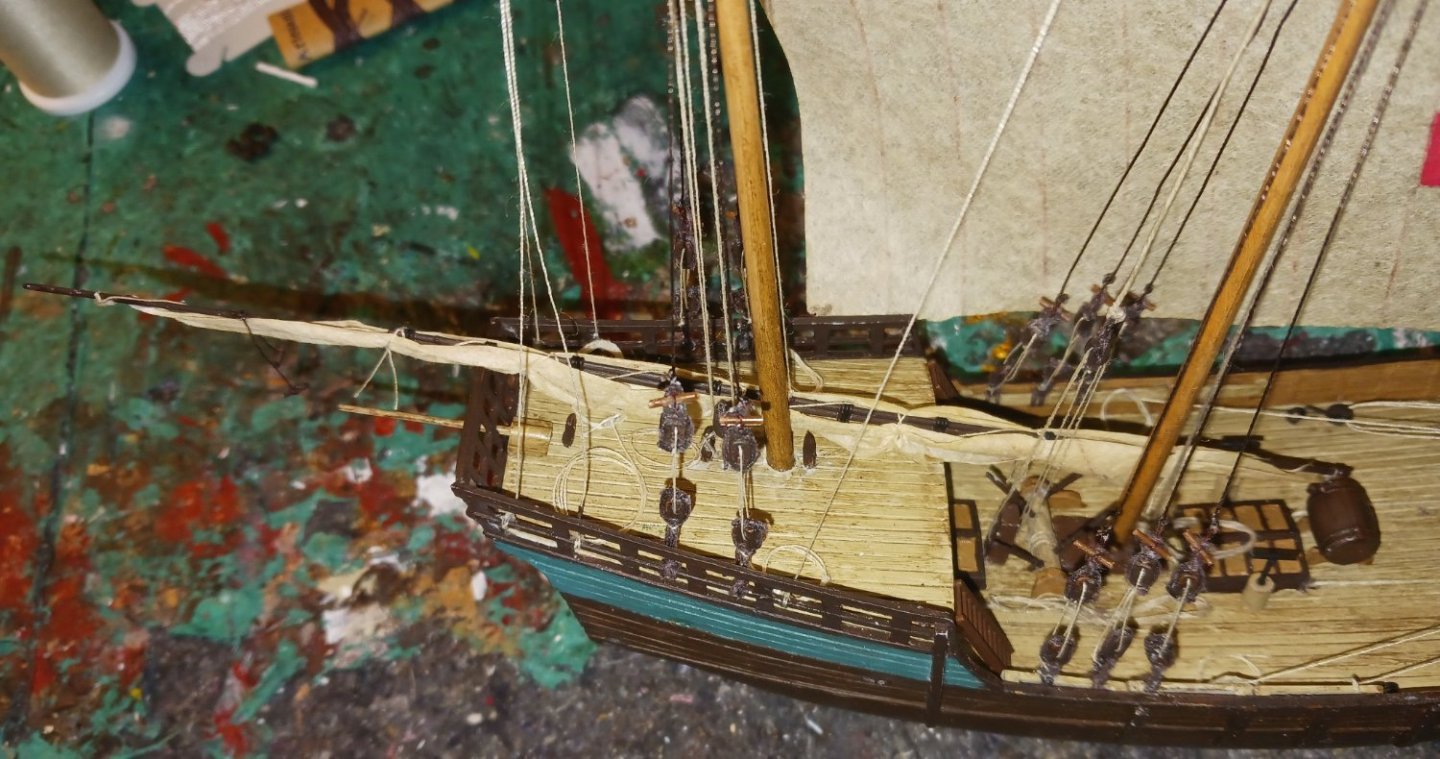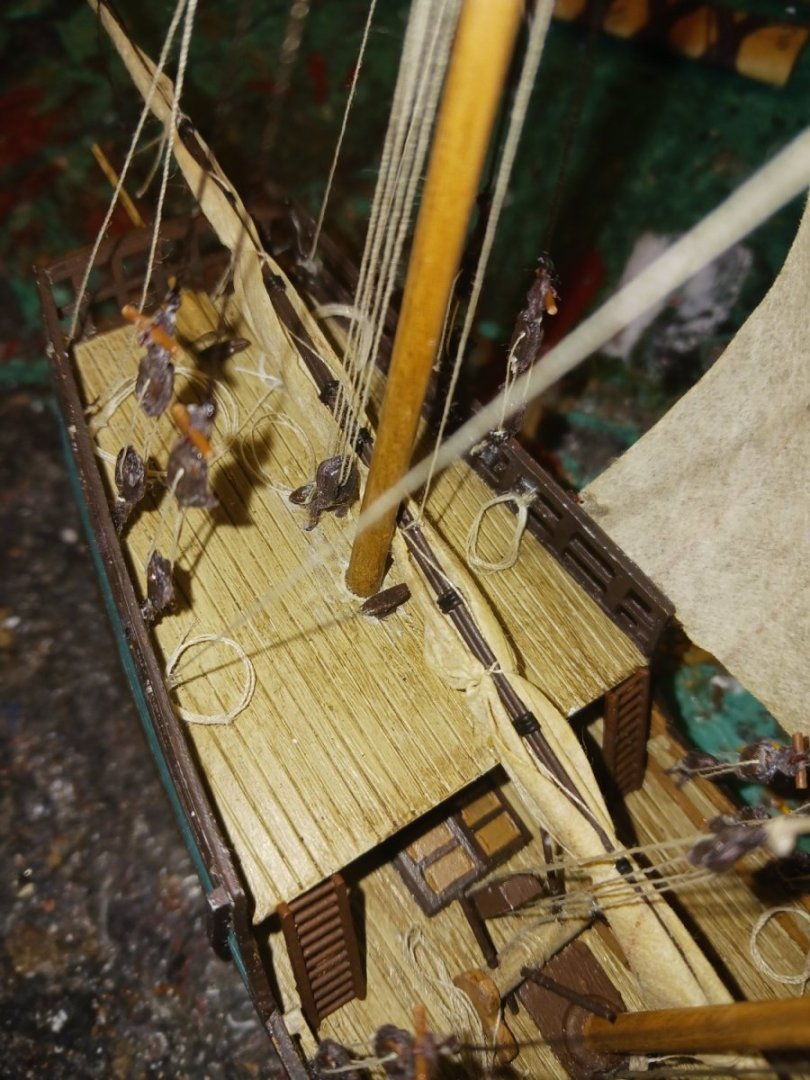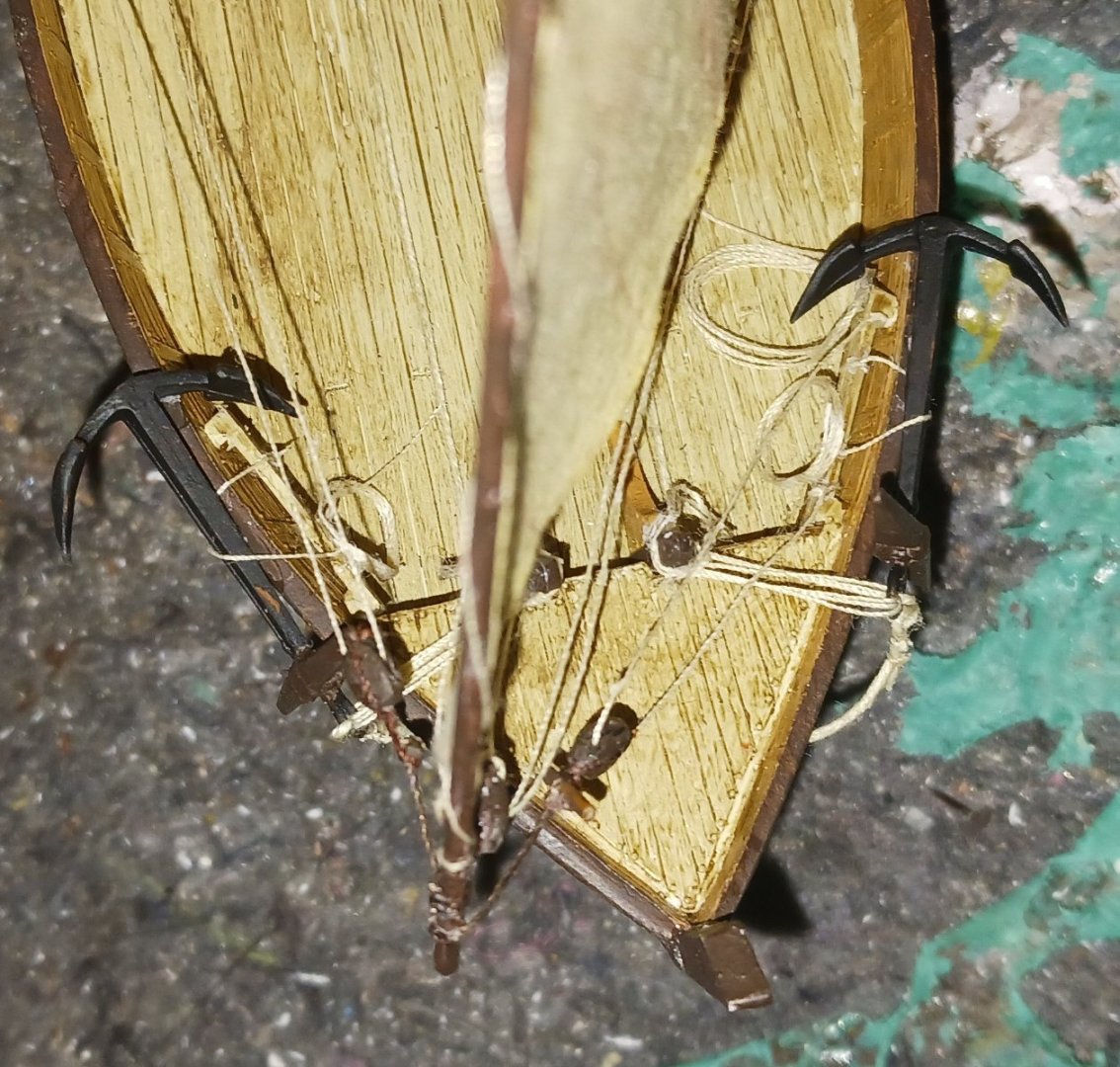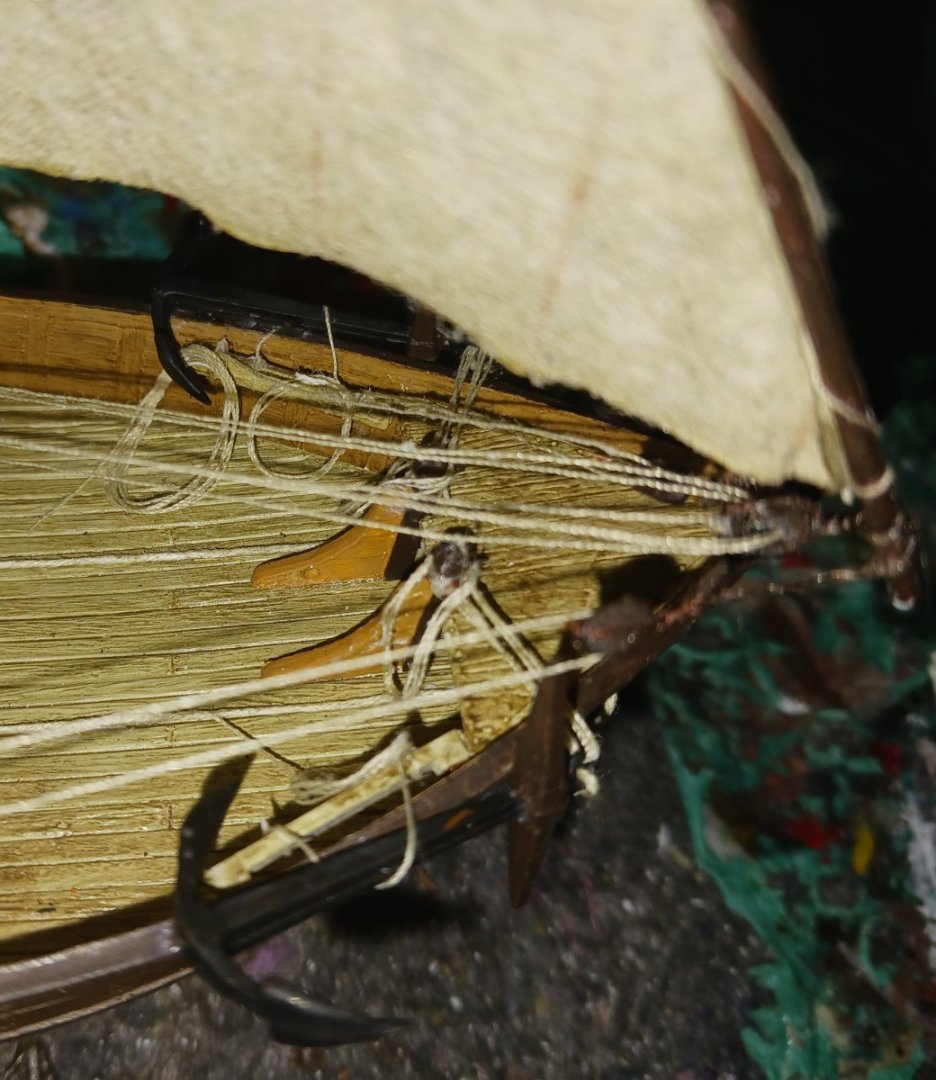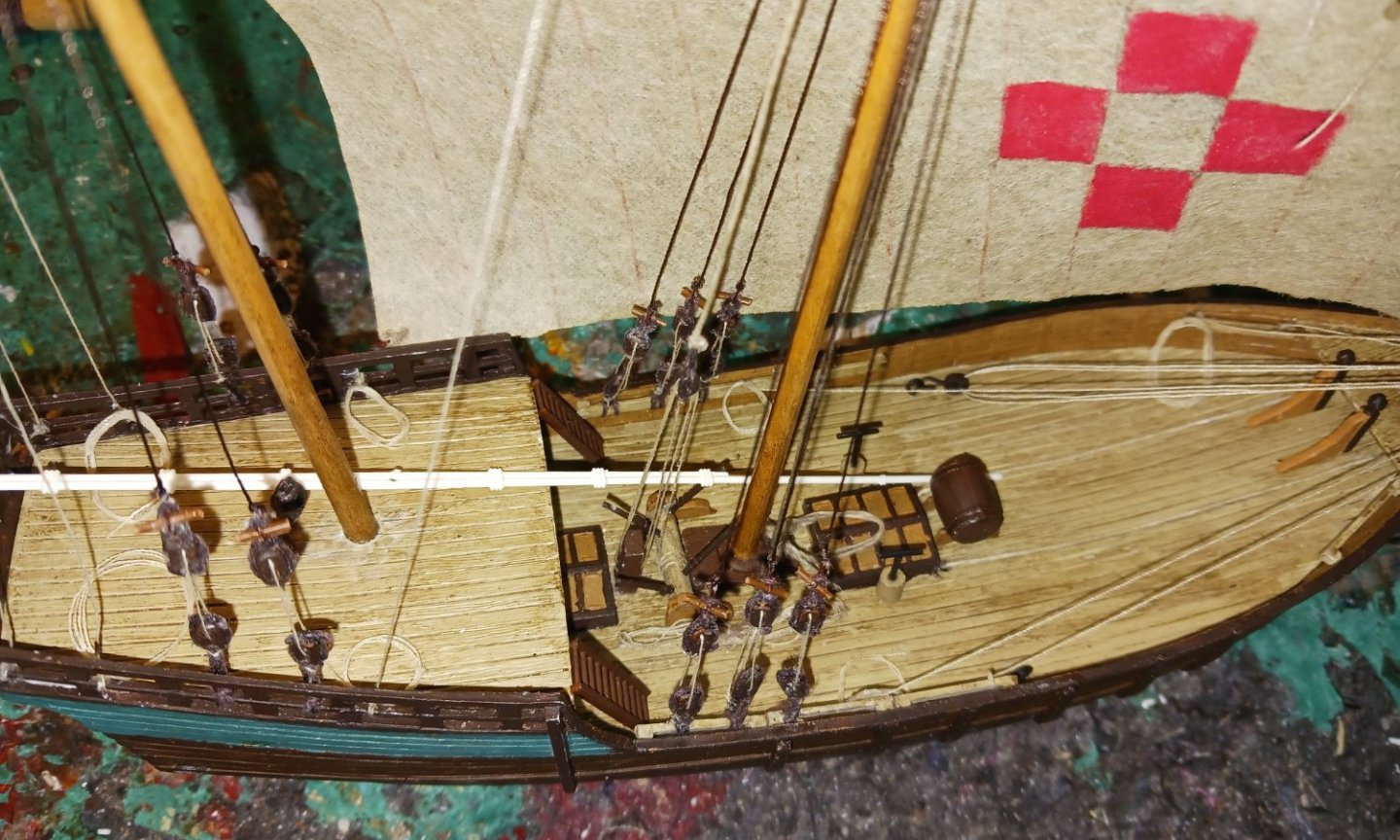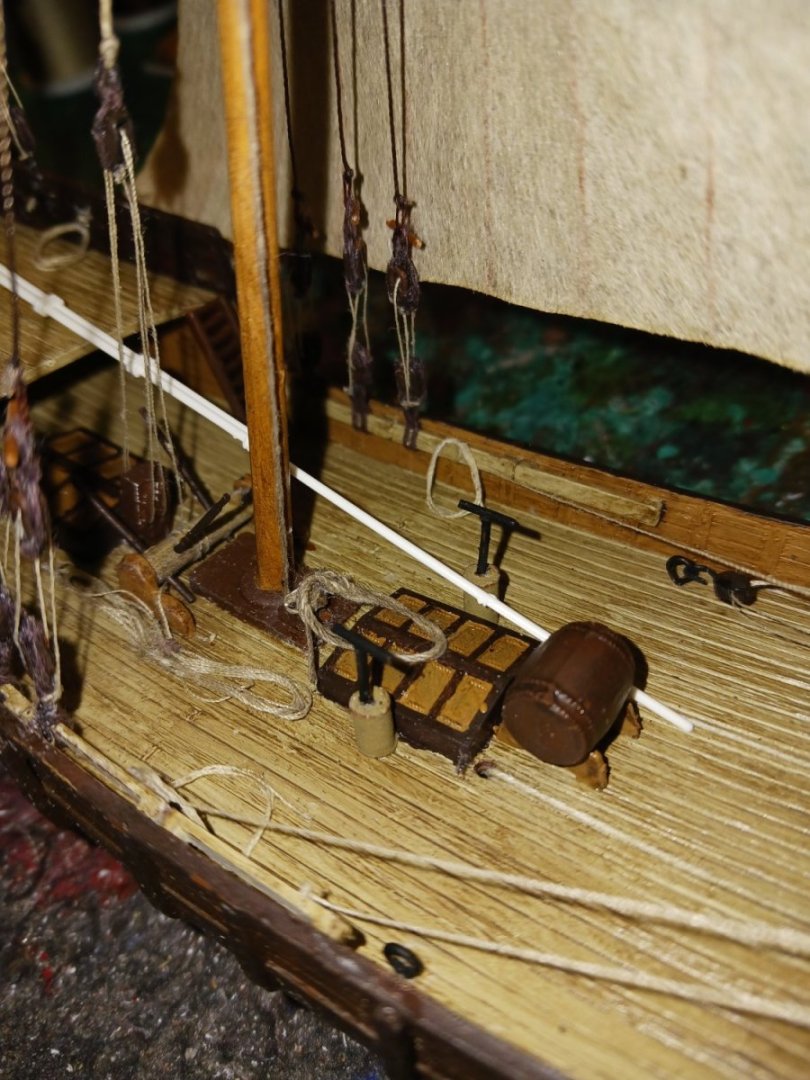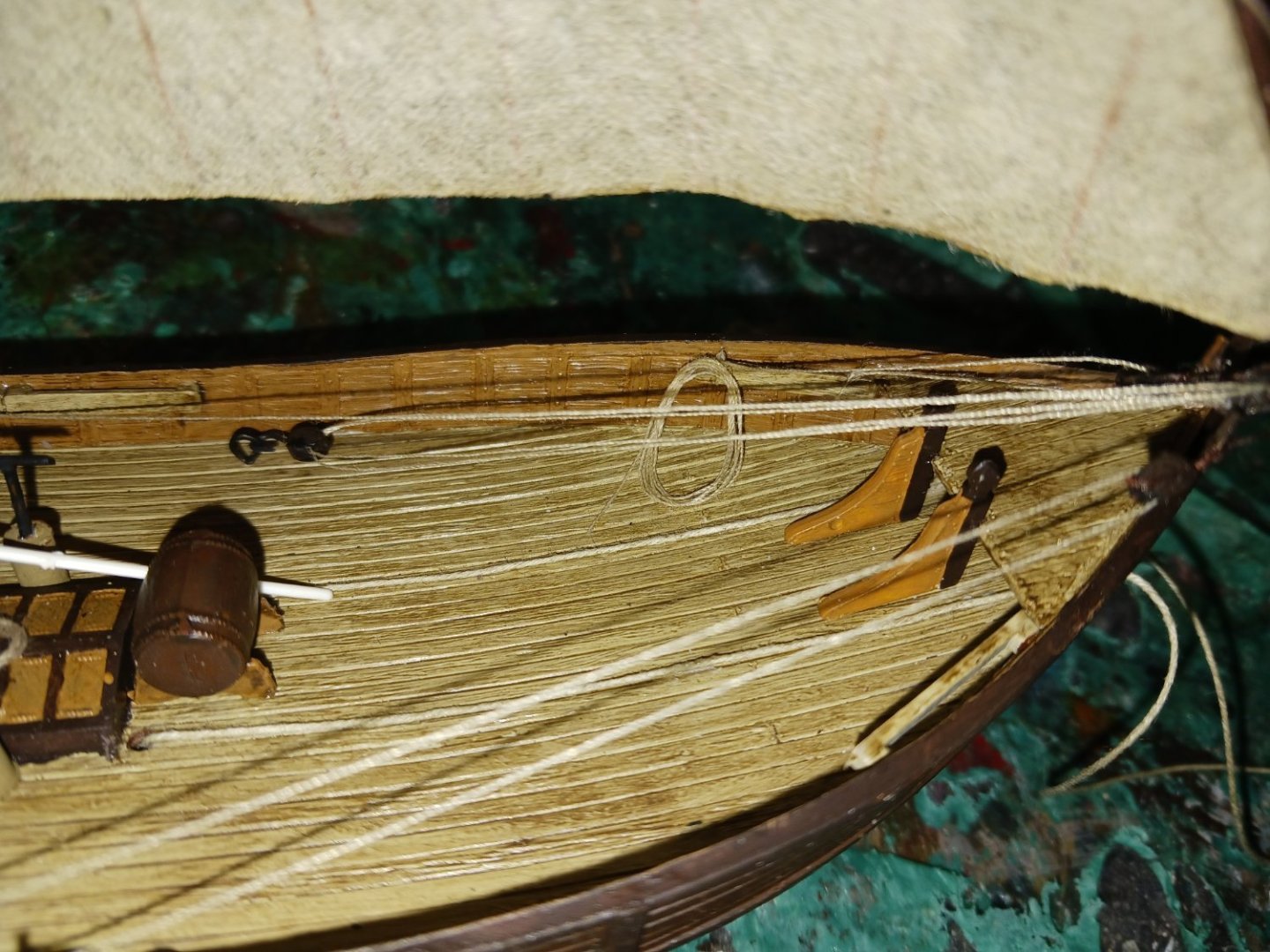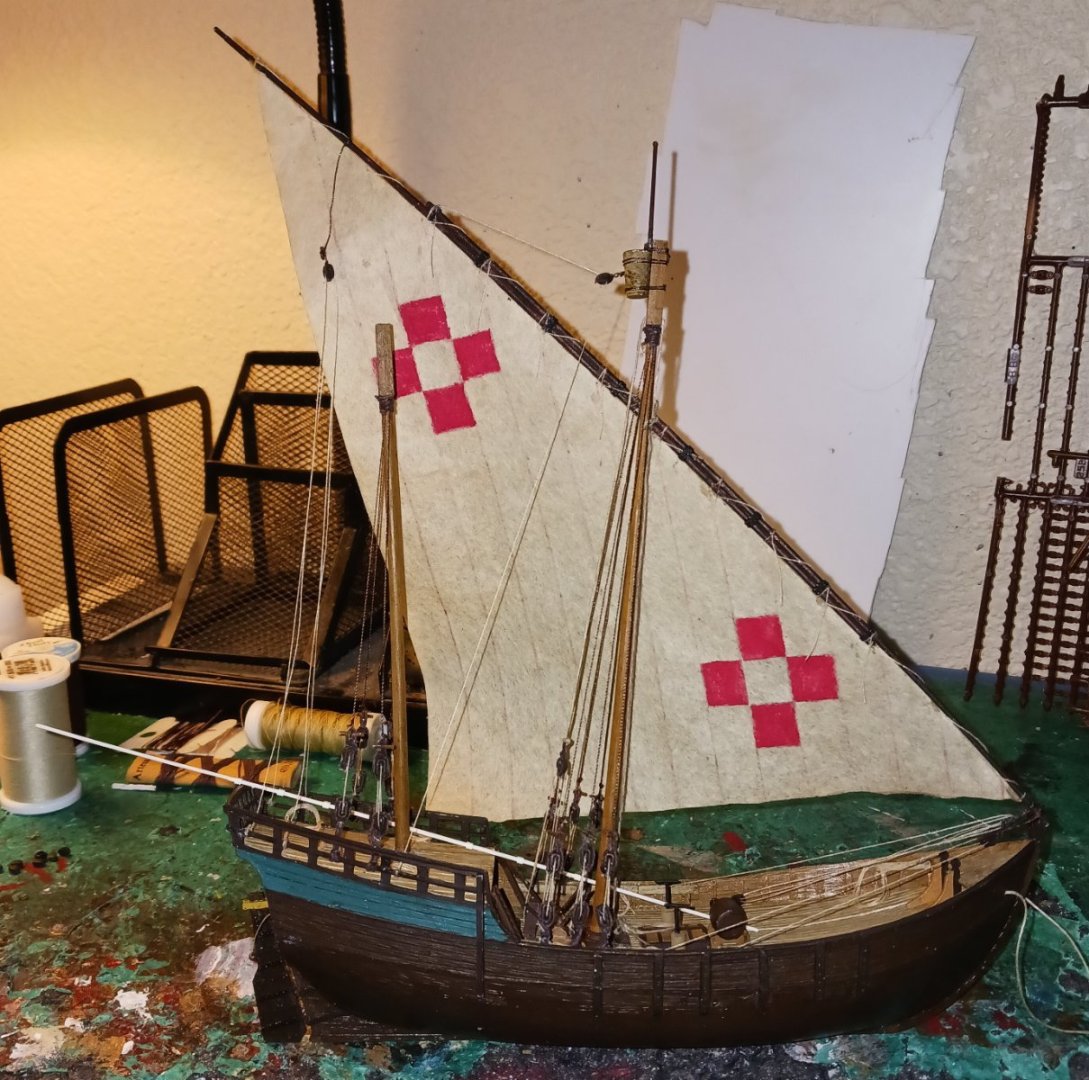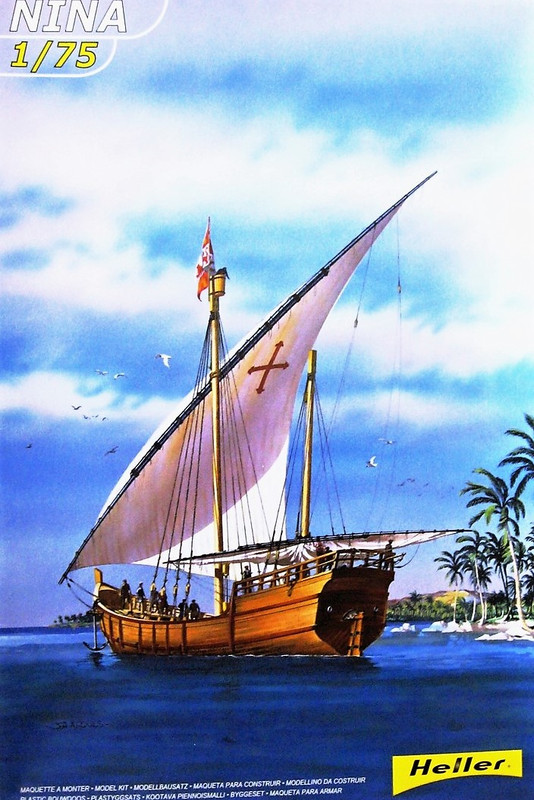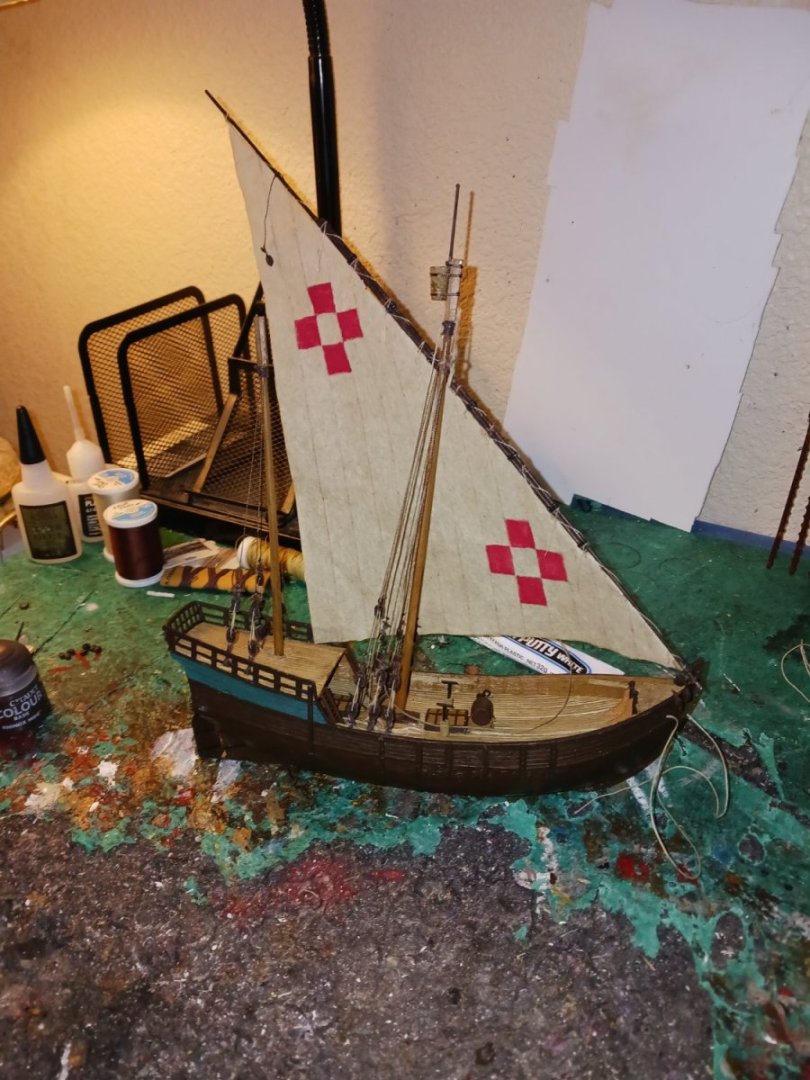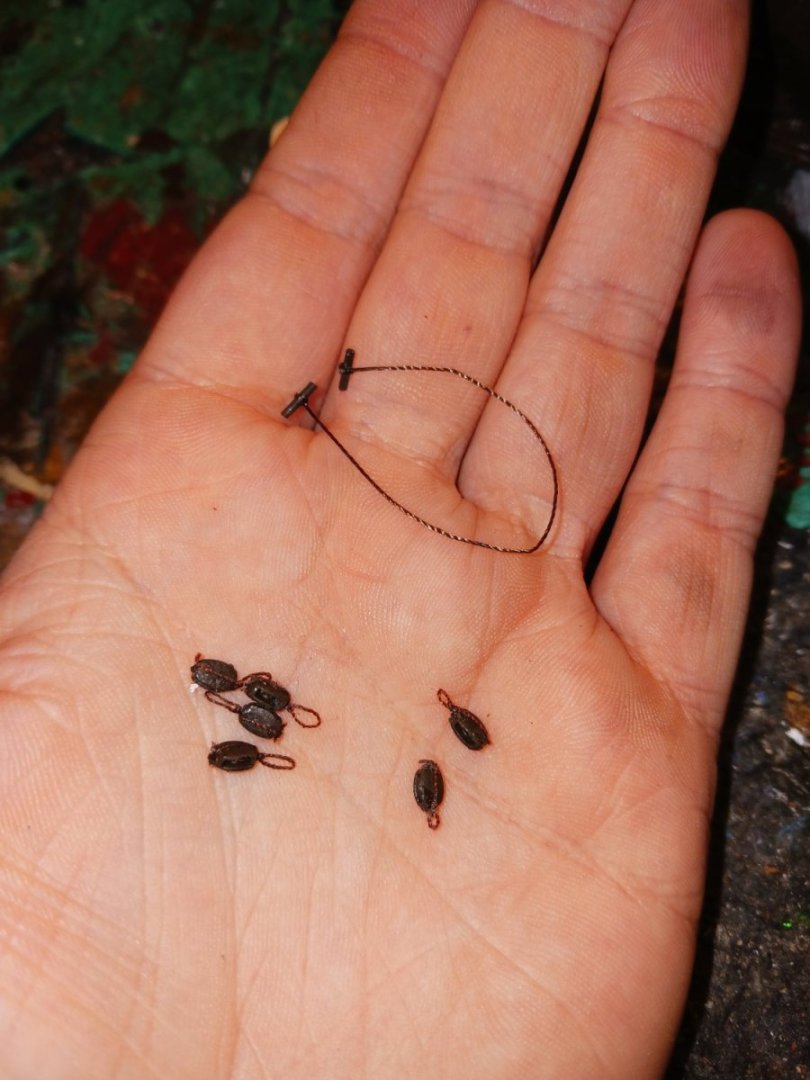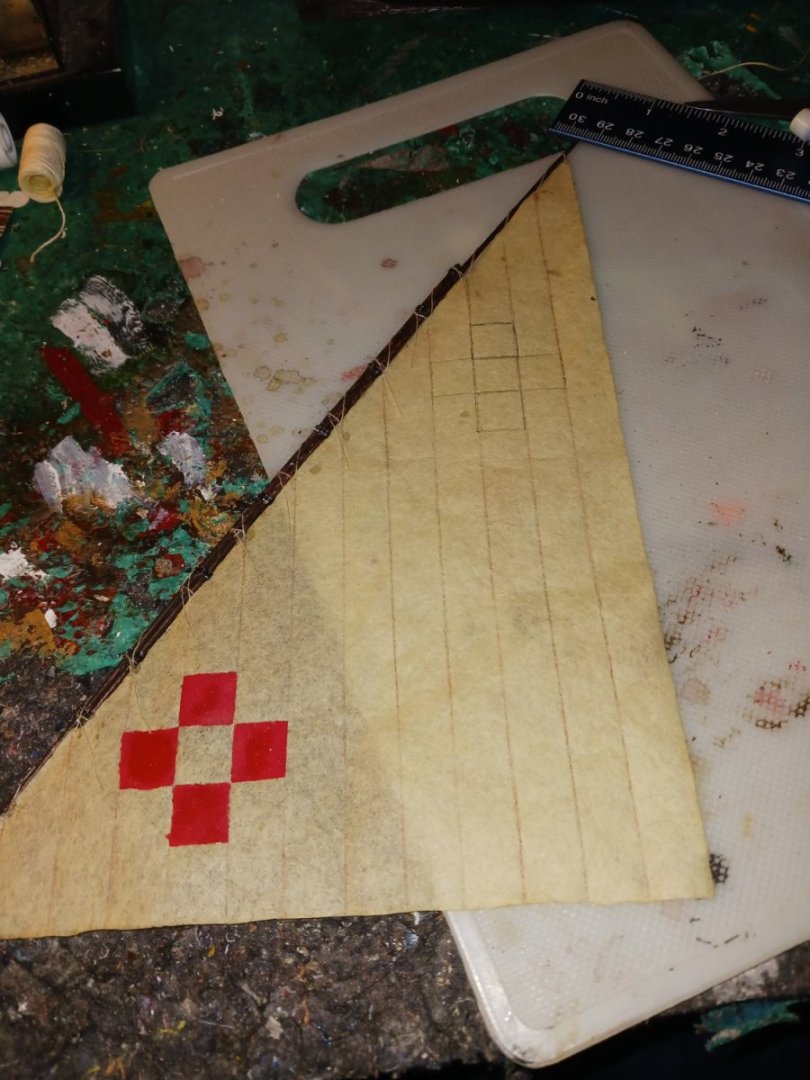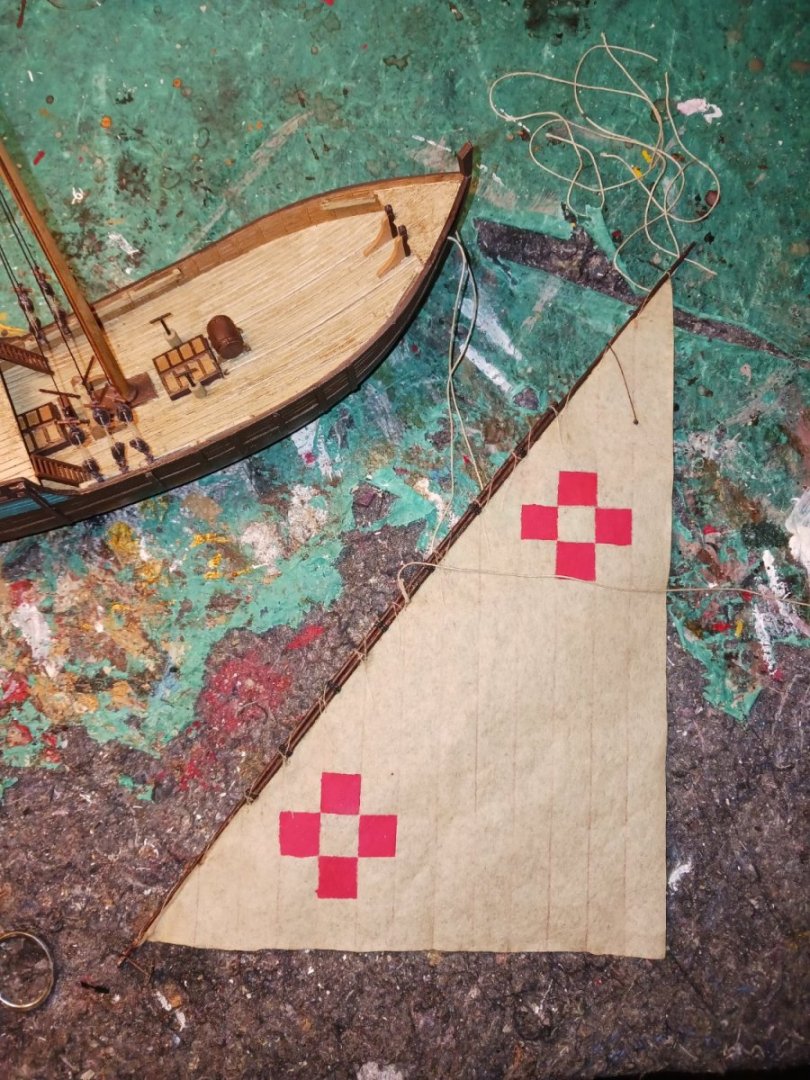-
Posts
1,389 -
Joined
-
Last visited
Content Type
Profiles
Forums
Gallery
Events
Everything posted by Ferrus Manus
-
I would skip a Soleil Royale for now, Isaiah. That would ruin your life.
- 177 replies
-
- Perseverance
- Modellers Shipyard
-
(and 1 more)
Tagged with:
-
Your Perseverance is shaping up beautifully, Isaiah. I can see how much you've learned and how good you've gotten just in the past few images. You should be proud of yourself.
- 177 replies
-
- Perseverance
- Modellers Shipyard
-
(and 1 more)
Tagged with:
-
Great! You did almost everything perfectly! However, the falls for the peak lifts for the spanker boom should belay somewhere around the mast or at the sides of the ship around where the mast is. This is so the spanker boom can freely swing just like the gaff.
- 177 replies
-
- Perseverance
- Modellers Shipyard
-
(and 1 more)
Tagged with:
-
Early September, 1492 The words of the evening Mass still ring in your ears. You curl up in a ball underneath the small forecastle of the wooden cradle that will rock you to sleep tonight. For now, the sea is calm and the winds are gentle. You can just barely see the stars through the rigging of the tiny ship you and 17 other men will call home for the next five weeks. There's a long road ahead of you. Captain Columbus is probably drawing up charts right now, but your only responsibility at the moment is getting to sleep. Many thoughts race through your head, but one of them seems to outshine the rest. This tiny little caravel you call home will brave the Green Sea of Darkness. You silently thank God and the Portuguese for developing a ship that will always be there for you, even when the sea gets rough. I have tied down the auxiliary oars, and with that, the Sao Paulo is finished. Thank you all (especially you Steven) for helping me with this (albeit small) project. Until next time, fair winds and calm seas.
-
The flags are on, and the ship is nearing completion. However, i have a theory. Some Medieval lateeners in the Mediterranean were known to use oars as an auxiliary (galleys, some roundships, and, i assume, early hulks). Now, in 1441 the caravel would not have existed in its most developed form. This implies that caravels before the 16th century may have had oars, owing to the fact that the Mediterranean conditions involve being without wind as often as having it. I propose that the Sao Paulo, which is more a medieval ship than anything else, might have had auxiliary oars for use when the sea was calm. This is a theoretical reconstruction, after all, and my goal is to create a ship that a sailor from Medieval Iberia would instantly recognize as a caravel. I also got this idea from the Occidental-turned-Zvezda kit, which includes auxiliary oars for the ship.
-
My guess would be to rerig just foreward of the flagpole. Someone correct me if i'm wrong, but i believe the same forces would be at play as with the main braces. Belay on a cleat.
- 1,508 replies
-
- Le Soleil Royal
- Heller
-
(and 1 more)
Tagged with:
-
Oh, what a nice paint job! At this scale, it's a wonder anyone can get anything painted right. You are doing a marvelous job on this kit.
-
And look even closer! That carrack on the left is basically an enlarged Mataro carrack. I might use this image as a reference for the Senora Fielden. This image just keeps on giving!
-
Would you look at that, Steven! Look at the upper works of the aforementioned caravel as well as some of the vessels in the foreground. The upper works of the caravel i just got done referencing have red, blue, and yellow paint, and the entirety of some of the foreground boats are painted as well, some even having designs. So, my paint job is historically accurate, or at least plausible.
-
There is little evidence of what flags were flown on Portuguese ships. This image shows the Portuguese caravels and carracks in port. The ships are likely from the mid-late 1400's, looking at the forecastles of the carracks. Look at the caravel on the center-right. This caravel is flying a Portuguese flag on the main truck, and multiple streamers on the lateen yard peaks. For this reason, I will decide to fly a Portuguese flag on the main truck and a streamer on the main yard.
-
That's an interesting rigging setup on the guns! I think the looped thread looks just fine. Like i said before, the company that made this model has no excuse not to give you at least some instruction on the rigging. My recommendation is to look up rigging plans of similarly rigged ships, or see other MSW modelers rig their kits.
- 35 replies
-
- flyer
- constructo
-
(and 1 more)
Tagged with:
-
I would like @Louie da fly to come and check if, other than the flags, anything else is needed that i missed in my research. I don't want to end up leaving anything out that should be there. Granted, i did more in the way of detail work than i usually do.
-
The mizzen sail was very easy to make. One of the reasons i love silkspan is that it's so scale-accurate. I have not cut anything down, that's the entire sail. After that i made the anchors, which were very easy to rig.
-
Let me finish off this sail by telling you guys that i'm using Heller blocks, which almost pass for medieval blocks, but are damn near unusable. I also was not provided any kind of kit string, but that's typical for Heller. IF they give you any line whatsoever, it's going to be worthless and model-ruining. The same goes for Revell kits pre-1990. I also have a solution for the bendy mizzen yard, and it's sitting right in front of you. My idea is that the mainsail is perfectly sufficient to propel the ship, and knowing Medieval sailing techniques, the mizzen sail was likely used more as directional trim; a "wind rudder" more than actual propulsion. Because of the toggled blocks, i would have to just include the toggles and tyes, and the halyard. No blocks or lines, just the furled sail. This is the box art. The box art does a pretty good job of depicting the proportions of the actual model, and that includes the yards. The mizzen yard is shown inboard the shrouds and parallel (kind of) to the keel. They are either raising or lowering sail, because the blocks are still attached to the yard. They probably would have taken those off to clear up the deck when the sail wasn't being used. The artist also depicted the men on the ship as significantly smaller than 1/75, more like 1/96. Multiple historical images also depict caravels sailing with only the main, although the mizzen sail is basically always depicted as being furled aloft rather than on the deck. These images are, however, all significantly later than 1441.
-
I've made a flimsier yard work, so there's no reason for this one not to. I just have to be gentle. Maybe the next kit will involve the replacement of yards. ...What i'm thinking is a generic English galleon rechristened the Queen Elizabeth, for a friend of mine. Obviously with historically accurate fittings.
-
Oh, stop! You really are that persistent, are you? Don't think i don't notice. For now, it's good to watch you build Medieval ships. You already know my first wood ship will be the S.F.
-
To everyone here, I am currently working on a 15th century caravel, the Sao Paulo. You can see it in the pre-1500 kit builds.
About us
Modelshipworld - Advancing Ship Modeling through Research
SSL Secured
Your security is important for us so this Website is SSL-Secured
NRG Mailing Address
Nautical Research Guild
237 South Lincoln Street
Westmont IL, 60559-1917
Model Ship World ® and the MSW logo are Registered Trademarks, and belong to the Nautical Research Guild (United States Patent and Trademark Office: No. 6,929,264 & No. 6,929,274, registered Dec. 20, 2022)
Helpful Links
About the NRG
If you enjoy building ship models that are historically accurate as well as beautiful, then The Nautical Research Guild (NRG) is just right for you.
The Guild is a non-profit educational organization whose mission is to “Advance Ship Modeling Through Research”. We provide support to our members in their efforts to raise the quality of their model ships.
The Nautical Research Guild has published our world-renowned quarterly magazine, The Nautical Research Journal, since 1955. The pages of the Journal are full of articles by accomplished ship modelers who show you how they create those exquisite details on their models, and by maritime historians who show you the correct details to build. The Journal is available in both print and digital editions. Go to the NRG web site (www.thenrg.org) to download a complimentary digital copy of the Journal. The NRG also publishes plan sets, books and compilations of back issues of the Journal and the former Ships in Scale and Model Ship Builder magazines.


